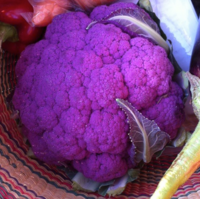
Photo from wikipedia
Abstract The procedure for obtaining anthocyanin-enriched extracts from black rice was optimized by response surface methodology, and the effects of the optimized extract on in vitro starch digestibility were investigated… Click to show full abstract
Abstract The procedure for obtaining anthocyanin-enriched extracts from black rice was optimized by response surface methodology, and the effects of the optimized extract on in vitro starch digestibility were investigated in a wheat flour gel model. The experimental results were well-described by a polynomial multiple regression model (R2 = 0.8812, p = 0.0546) with regard to anthocyanin content in anthocyanin-enriched extracts from black rice. The optimal conditions for obtaining anthocyanin-enriched extracts from black rice were 50.78% ethanol and 1 N HCl (0.60 mL), yielding a predicted anthocyanin content of 624.27 mg cyanidin 3 glucoside extract. The optimized anthocyanin-enriched extract was a stronger inhibitor of α-glucosidase than acarbose. Furthermore, the predicted glycemic index values of gels prepared with the optimized extract were significantly lower than that of wheat flour gel. These results indicate that the optimized extract suppressed starch hydrolysis by inhibiting digestive enzymes.
Journal Title: Food Science and Biotechnology
Year Published: 2017
Link to full text (if available)
Share on Social Media: Sign Up to like & get
recommendations!